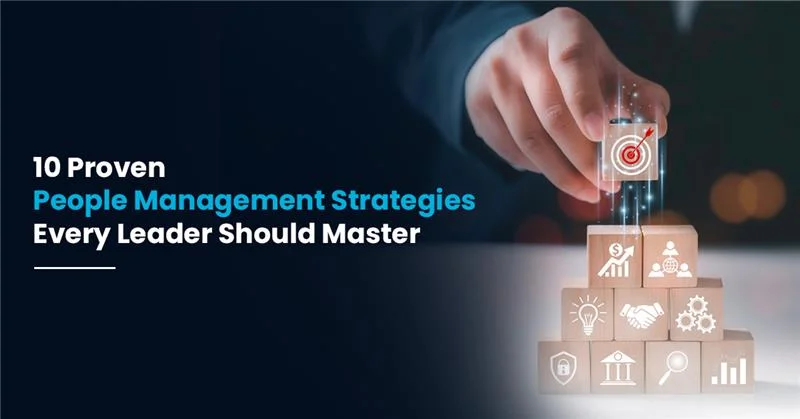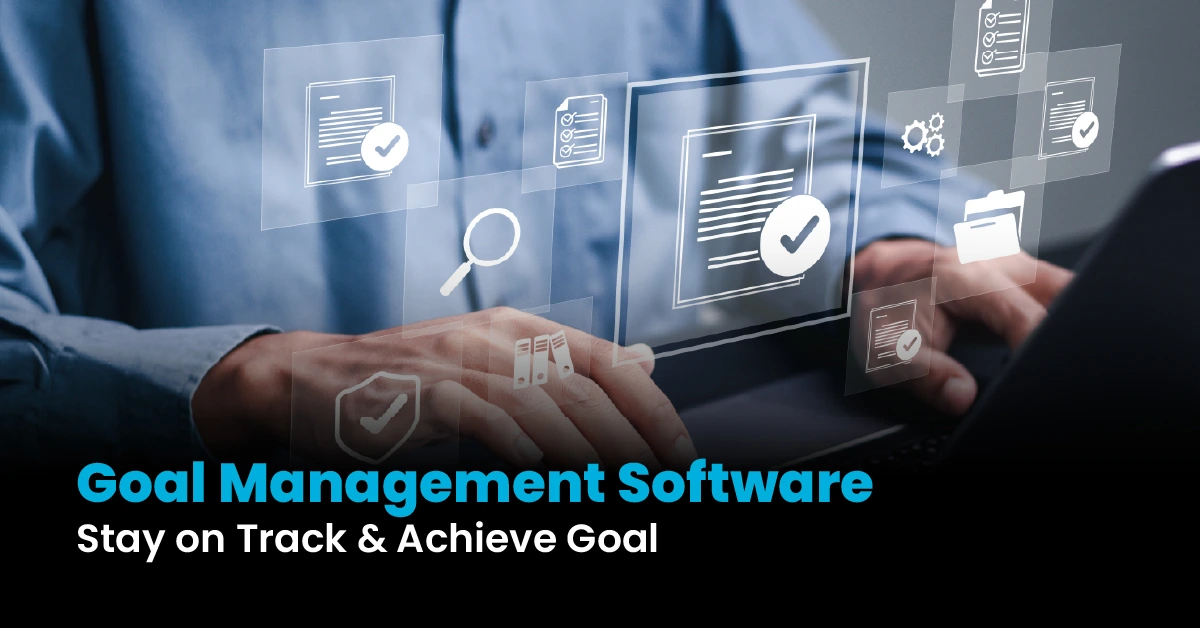Here’s the hard truth: 50 percent of employees have quit a job at some point in their careers to “get away from their manager.” That statistic isn’t just a number—it’s a wake-up call for every leader who wants to build a thriving team.
Managing people isn’t about being the “boss.” It’s about creating an environment where your team actually wants to show up, contribute, and grow. It is more important than ever to become an expert in people management, as less than one-fourth of workers worldwide are actively involved in their jobs.
Let’s dive into 10 proven strategies that will transform how you lead your team.
Why managing people effectively matters in today's workplace
The numbers don‘t lie. Employee engagement in the U.S. fell to its lowest level in a decade in 2024, with only 31% of employees engaged according to Gallup’s latest research. The situation is much worse on a global scale: according to a Gallup survey, managers saw the worst loss in employee engagement, which fell to 21% globally in 2024. Ineffective leadership has a significant negative impact on your bottom line in addition to morale.
The real cost of poor people management
When you’re not managing employees effectively, you’re looking at:
- 43 percent higher turnover rates for disengaged teams
- Decreased productivity across all departments
- Lower customer satisfaction scores
- Increased recruitment and training costs
But here’s the flip side: Companies that invest in leadership development experience a 32 percent reduction in turnover rates and a 10 percent increase in productivity. That’s the power of effective people management.
10 essential people management strategies for success
Ready to become the leader your team deserves? These strategies will revolutionize your approach to managing people.
Strategy 1: Master clear communication in people management
Communication isn’t just talking—it’s the foundation of managing employees successfully. Your team can’t read your mind, and assumptions kill productivity.
How to manage people through communication:
- Schedule weekly one-on-ones (non-negotiable)
- Be specific with expectations and deadlines
- Listen more than you speak
- Ask “What questions do you have?” instead of “Any questions?”
Pro tip: Replace “Good job” with specific feedback like “Your analysis in the client presentation helped us secure the deal.”
Strategy 2: Individualized motivation in managing people
Here’s what most leaders get wrong: they manage everyone the same way. Effective people management means understanding what makes each person tick.
Management tips for managers on motivation:
- Some employees want public recognition; others prefer private praise
- Identify intrinsic motivators (growth, autonomy, purpose) vs. extrinsic ones (bonuses, titles)
- Use personality assessments to understand communication styles
- Match projects to individual strengths and interests
Strategy 3: Strategic delegation in people management
Delegation isn’t dumping work on others. It’s strategic people management that develops your team while freeing up your time for high-level tasks.
How to manage people through effective delegation:
- Match tasks to skill levels and career goals
- Provide context, not just instructions
- Set clear deadlines and check-in points
- Resist the urge to micromanage
Remember: If you’re working late while your team leaves on time, you’re not delegating effectively.
Strategy 4: Conflict resolution in managing employees
Conflict happens. How you handle it separates good managers from great leaders. Avoiding confrontation just makes it worse rather than helps it go away.
Management best practices for conflict resolution:
- Address issues within 24 to 48 hours
- Focus on behaviors, not personalities
- For conversations that get off subject, employ the “parking lot” technique.
- Follow up to ensure resolution sticks
Strategy 5: Professional development in people management
Your employees aren’t just doing a job—they’re building careers. Managing people effectively means investing in their growth, even if it means they might eventually move on.
How to manage people’s career development:
- Create individual development plans
- Offer stretch assignments and cross-training
- Connect employees with mentors
- Budget for external training and conferences
Strategy 6: Performance monitoring in managing employees
Forget annual reviews. Modern people management requires continuous performance conversations that help employees course-correct in real-time.
Management tips on performance:
- Use SMART goals with monthly check-ins
- Implement peer feedback systems
- Track both results and behaviors
- Celebrate small wins consistently
Strategy 7: Work-life balance in people management
75 percent of workers are actively contemplating leaving their current jobs, often due to burnout. Smart people management includes protecting your team’s well-being.
Managing employees’ work-life integration:
- Offer flexible scheduling when possible
- Encourage actual lunch breaks
- Model healthy boundaries yourself
- Check workload distribution regularly
Strategy 8: Emotional intelligence in managing people
You get recruited with technical skills, but you get promoted with emotional intelligence. In people management, EQ is your secret weapon.
How to manage people with emotional intelligence:
- Read the room before making announcements
- Acknowledge stress during busy periods
- Celebrate team successes publicly
- Address negative energy quickly
Strategy 9: Inclusive decision-making in people management
No one like being told what to do without being given an explanation. Participating in decision-making with your team increases buy-in and frequently results in superior solutions.
Management best practices for decision-making:
- Share your thought process, not just conclusions
- Ask for input before major changes
- Explain the “why” behind decisions
- Be transparent about what’s not negotiable
Strategy 10: Change management in managing people
Change is inevitable; resistance is optional. How you guide your team through transitions determines whether change energizes or paralyzes your organization.
Management tips during change:
- Communicate early and often
- Address the “What’s in it for me?” question
- Provide extra support during transition periods
- Celebrate adaptation milestones
Common people management mistakes to avoid
Even with the best intentions, leaders make predictable mistakes in managing employees. Here are the big ones:
The micromanagement trap
Micromanaging kills motivation faster than anything else. Have faith in your employees to do the tasks for which they were employed.
Signs you’re micromanaging:
- You’re checking in multiple times per day
- Employees ask permission for routine decisions
- You redo work instead of coaching improvement
- Your team stops bringing ideas to you
Conclusion: Choose Team GPS to revolutionize your personnel management
Knowing these strategies and implementing them successfully are two different things. Most leaders fail at managing employees because they lack practical frameworks and ongoing support.
Team GPS delivers both.
This isn’t theory—it’s hands-on training from leaders who’ve managed teams through real challenges, downturns, and rapid growth.
What You Get:
- Battle-tested management best practices from across industries
- Live practice sessions with expert feedback
- Templates and systems you implement immediately
- Access to leadership coaches who get the real challenges
- Network of leaders facing similar situations
Poor people management costs you daily: High turnover, low engagement, missed deadlines, team conflicts. There is more unrealized potential every day you wait.
Your team’s success depends on the leadership decisions you make today.
Schedule you free Team GPS demo today and join hundreds of leaders who’ve already transformed their approach to managing people.
FAQs (frequently asked questions)
Q1: How do you motivate team members who seem disengaged?
A: Have a private conversation to identify the root cause—usually workload, unclear expectations, or feeling undervalued.
Q2: What strategies do you use to resolve conflicts within a team?
A: Address issues immediately, focus on behaviors not personalities, and follow up to ensure lasting resolution.
Q3: How do you set performance goals for team members effectively?
A: Use SMART goals, involve employees in the creation process, and connect goals to individual growth.
Q4: How do you manage remote team members effectively?
A: Communicate more frequently, use video for important discussions, and focus on results over hours worked.
Q5: What’s the best way to give constructive feedback to employees?
A: Be specific and timely, focus on behaviors, and always provide clear next steps for improvement.











